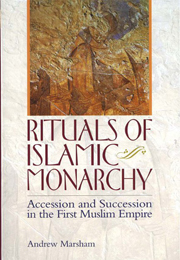Book contents
- Frontmatter
- Contents
- List of maps and figures
- Acknowledgements
- Map 1
- Map 2
- Map 3
- INTRODUCTION
- PART I LATE ANTIQUE ARABIA AND EARLY ISLAM (c. 550–c. 660)
- PART II THE UMAYYAD CALIPHATE (c. 660–750)
- PART III THE EARLY ABBASID CALIPHATE (c. 750–809)
- INTRODUCTION
- 10 THE CONSOLIDATION OF ABBASID POWER: AL-MANṢŪR AND AL-MAHDĪ (754–785)
- 11 THE CALIPHATES OF MŪSĀ AL-HĀDĪ (785–786) AND HĀRŪN AL-RASHĪD (786–809)
- 12 ‘DISPOSITIVE DOCUMENTS’ FOR THE EARLY ABBASID SUCCESSION
- PART IV THE MIDDLE ABBASID CALIPHATE (809–865)
- CONCLUSION
- Genealogical table of Quraysh
- Genealogical table of the Abbasid caliphs
- Bibliography
- Index
12 - ‘DISPOSITIVE DOCUMENTS’ FOR THE EARLY ABBASID SUCCESSION
from PART III - THE EARLY ABBASID CALIPHATE (c. 750–809)
Published online by Cambridge University Press: 05 September 2013
- Frontmatter
- Contents
- List of maps and figures
- Acknowledgements
- Map 1
- Map 2
- Map 3
- INTRODUCTION
- PART I LATE ANTIQUE ARABIA AND EARLY ISLAM (c. 550–c. 660)
- PART II THE UMAYYAD CALIPHATE (c. 660–750)
- PART III THE EARLY ABBASID CALIPHATE (c. 750–809)
- INTRODUCTION
- 10 THE CONSOLIDATION OF ABBASID POWER: AL-MANṢŪR AND AL-MAHDĪ (754–785)
- 11 THE CALIPHATES OF MŪSĀ AL-HĀDĪ (785–786) AND HĀRŪN AL-RASHĪD (786–809)
- 12 ‘DISPOSITIVE DOCUMENTS’ FOR THE EARLY ABBASID SUCCESSION
- PART IV THE MIDDLE ABBASID CALIPHATE (809–865)
- CONCLUSION
- Genealogical table of Quraysh
- Genealogical table of the Abbasid caliphs
- Bibliography
- Index
Summary
At this point, it is worth pausing to assess how the understanding of the ‘covenant’ between Humanity, God and the caliph had been transformed by the events of the mid-eighth century. Among the best sources of evidence for this are the copies of the ‘dispositive documents’ (sharṭ, pl. shurūṭ, sharāɔit) concerning the succession that emanated from the early Abbasid caliphal court. These were written records of contractual agreements about the succession. The anonymous commander's account of the ceremony at which cĪsā b. Mūsā was deposed in 764 describes how:
‘By God, if by chance cĪsā b. Mūsā forgot something in the sequence of his public declaration, then (al-Mahdī's scribe), Abū cUbayd Allāh would stop him until he had completed every detail, in order to bind him into the agreement (li'l-istīthāq minhu). Then he sealed the document (al-kitāb) and the witnesses witnessed it; I, and all the people, were present until cĪsā put his own handwriting and seal on it (waḍaca calayhi cĪsā khaṭṭahu wa-khātamahu). Then they went into the palace through the door of the caliphal enclosure (maqṣūra).’
As we have seen, copies of similar documents said to have been used in 776, 802 and 805 are extant in the later tradition (where the documents of 802 and 805 have been conflated). In this chapter, the structure and formulas of the agreements of 802 and 805 are compared with the sharṭ for the succession to al-Mahdī, drawn up in 776, as well as with other similar conditional agreements, such as amāns, or ‘safe-conducts’.
- Type
- Chapter
- Information
- Rituals of Islamic MonarchyAccession and Succession in the First Muslim Empire, pp. 230 - 250Publisher: Edinburgh University PressPrint publication year: 2009

